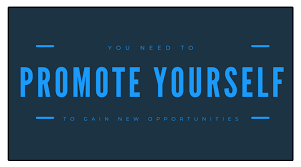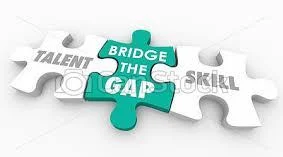Selling
is Understanding the difference between a Solution and a Problem- to drive success goal sales...to Closure
Stop
pitching Active listening
Where
people are taught these, “always be closing”, “high pressure” tactics…
Aggressive
selling method memorizes to close the target to fulfill quota- what has taught
in job training or commission-based sale aggression a HORSE ON RACE!!
Every day, there are people seeking knowledge on how to succeed in their endeavors,
and how to make life-changing income from whatever they are pursuing. Where people are taught these,
“always be closing”, “high pressure” tactics…
Aggressive
selling method memorizes to close the target to fulfill quota- what has taught
in job training or commission-based sale aggression a HORSE ON RACE!!
This is an IT age buyers are more aware, learned than ever…with
a quick Google search and some browsing, prospects can gather as much
information about a product as a salesperson has.
As a result, it’s harder for salespeople to demonstrate their
expertise. And if they can’t demonstrate expertise, it becomes all the more
difficult to establish credibility and eventually build trust. Without
credibility and trust, a salesperson will likely lose the interest of their
prospect ... or worse, never really gain their interest.
 So what
should salespeople do? Simple: Invest in listening.
So what
should salespeople do? Simple: Invest in listening.
Prospective listening to close the deal is the
method of passing the baton in a relay race to the touchline to FINISH.
The salesperson was likely more interested in selling you something
than in solving your needs.
The biggest challenge that I find most people have when it comes to
selling is understanding the difference between a solution and a problem. And most people when they
sell, they spend absolutely no time getting to know the individual that they’re
selling to. They spend all this time preparing their pitch and going in there
and getting ready to deliver their pitch.
But they
don’t actually understand the context of the situation that they’re actually
trying to serve.
And I think for the longest
time, dysfunctional selling has been evident in our marketplace, not just in
its practice, but also, especially in its training.
 Instead, embrace the
idea that it's time to listen to your
prospects. Embrace the idea that it's time to stop selling your product, and start helping your customers find a solution to their problems
instead. This sales tactic can ultimately help your marketing and sales teams
engage, nurture, and close more
prospects.
Instead, embrace the
idea that it's time to listen to your
prospects. Embrace the idea that it's time to stop selling your product, and start helping your customers find a solution to their problems
instead. This sales tactic can ultimately help your marketing and sales teams
engage, nurture, and close more
prospects.
Let’s conclude the post pitching with a Five Finger RULE to grab a
success.
I call them the five fingers to success. Goal, ambition,
hard work, positivity, and patience
Marketing: creating demand for what I have to sell by
addressing customer needs.
Sales: helping those who need what I have to make a
decision.
1. Questions
 Down to
think about talking about my ideas or offers, I need to listen. I talk very
little at the beginning of my sales process, except to ask an enormous list of
questions I’ve prepared in advance. Whether it’s a potential coaching client or
a brand strategy consultation, I might listen for an hour or more as my
prospect tells me all about their business. What are their biggest challenges?
What does success look like? What are their goals, competitors, past
experiences, passions, pains, etc?
Down to
think about talking about my ideas or offers, I need to listen. I talk very
little at the beginning of my sales process, except to ask an enormous list of
questions I’ve prepared in advance. Whether it’s a potential coaching client or
a brand strategy consultation, I might listen for an hour or more as my
prospect tells me all about their business. What are their biggest challenges?
What does success look like? What are their goals, competitors, past
experiences, passions, pains, etc?
The purpose
of starting by listening is twofold:
·
Making them feel seen, heard, and understood (empathy)
- Listening for clues as to how I can best position
my offer in the context of their story (relevancy).
2. Confirm
Once I’ve
asked enough questions, I make confirmation statements to ensure we’re on the
same page. “What I’m hearing is…” “So to recap, you want to…”, “As I’ve
understood, your biggest challenge right now is…”
I want them
to understand that I understand. I want
them to know that they’ve been seen, heard, and understood.
Another thing to make sure of at the confirmation stage is that I am talking
to the key decision-maker. The last thing you want is to find out I have been
selling to someone who has no purchasing authority.
3. Create the vision
I don’t
have to work hard on this because I already know what the vision is. They told
me when I asked them, “What does success look like for you?”
My clients don’t buy my services because they want a brand strategy or
coaching calls. They buy because they want to bring their dreams to life, make
more money, have more time, and worry less. So I don’t sell services. I sell the
vision.
As I’m painting the vision for my client, I’m usually hearing “yes,
yes, yes — that’s exactly what I want!”
It’s a yes from the limbic brain.
4. Provide solutions
Once I have
a yes from the limbic brain with the “why,” it’s time to get the rational brain
onboard with the “how” and the “what.” I provide a compelling solution to
their current problem with my services, present a clear step-by-step plan, and
explain how much delivering the vision will cost.
How to get
the rational brain on board:
· Social proof and 3rd party validation
(testimonials, name-dropping, results).
·
Be prepared to address any objections. Use stories
like, “I totally understand, I worked with X customers who felt the same way.
But we tried it and they got this huge result…”
· Use their own words to explain things. I make sure
I use the exact same words and phrases they used in stage one and avoid all
jargon.
A final
tip: If you use presentations or proposals as part of your sales process,
never, ever end on the price page. End with the vision.
5. Move to close
Having
painted a picture of the vision again and re-engaged with the limbic brain, I
move to close the sale. I usually say something like “So, would you like my
help?”
This way, I position myself as a guide or advisor, not
a deal-closer. I don’t need to use scarcity tactics, urgency, or pressure to
close the deal. I don’t need to make my client feel uncomfortable.. nimble... agile.. bouncer
 These
qualities can help you reach your goal, whether you're trying to build a Remote WORK-LIFE HOME ... to
40 hours a week on learning how to be a Digital Marketer or your
niche, can't believe how much a regular workout contributes to
his success. ... "Why does Google go up
and Yahoo down!”. Keep you on track and get set go with a will power off I
might win someone day … carry your TORCH Baton to the FINAL touchdown line of
success to get your first offer success…
These
qualities can help you reach your goal, whether you're trying to build a Remote WORK-LIFE HOME ... to
40 hours a week on learning how to be a Digital Marketer or your
niche, can't believe how much a regular workout contributes to
his success. ... "Why does Google go up
and Yahoo down!”. Keep you on track and get set go with a will power off I
might win someone day … carry your TORCH Baton to the FINAL touchdown line of
success to get your first offer success… 























